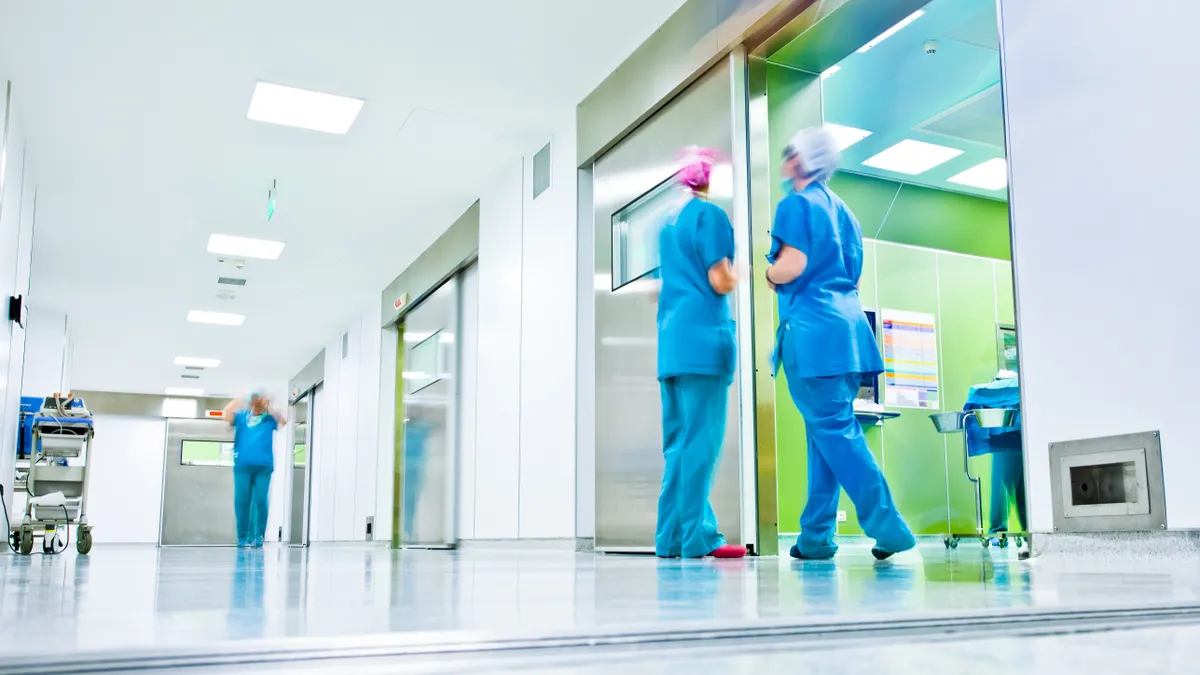Dive Brief:
- Findings from a September consumer sentiment survey initiated by investment firm Needham & Company of 257 older people across the U.S. suggest increasing willingness to have elective procedures, even as the pandemic continues.
- The time between when consumers were surveyed and when they'd be comfortable having a procedure is shrinking, from an average of 3.6 months in August to 2.7 months in September.
- But a "significant portion" of consumers remain hesitant to do so, analysts said in a report outlining the results Friday. Some 40% of respondents would still wait until next year to have an elective procedure.
Dive Insight:
S&P Global, Moody's Investors Service and Bank of America are among the industry observers that have expressed cautious optimism regarding rising surgery volumes and medtech companies' trajectory of recovery after seeing business slashed in March and April.
While medical device makers and healthcare systems share financial incentive to resume such procedures where possible, and have reported surgery volume increases across recent months, consumers' comfort level in going through with procedures while healthcare systems are still fighting COVID-19 remains a variable largely outside of manufacturers' and hospitals' control.
Companies have tried to urge a return to care where possible. For example, medical device giant Johnson & Johnson this month rolled out a multichannel campaign dubbed My Health Can't Wait that in part highlights the potential detriments of delaying routine care.
Needham's September survey found that 60% of respondents were comfortable having a procedure during the second half of this year. That figure rose to 71% when examining the subset of respondents who actually needed a procedure in 2020. In both cases, the remaining respondents were nearly evenly split on whether they would wait until the first quarter of 2021 or the second quarter of next year and beyond.
By sector, analysts said gastrointestinal and orthopaedic procedures appear among the most likely to have an early rebound, but acknowledged they are judging based on a small sample size of 2020 rescheduling data. More insight on how that recovery is progressing should come in about four weeks when medical device manufacturers begin the next round of quarterly earnings reports.
Analysts noted some key differences in survey responses by geography. Compared to the August survey, the rate of people in the West wanting to wait until 2021 for procedures increased 4%, yet decreased in the Southeast by 17%. As for the immediate term, people in the West were least likely to be okay with having a procedure this quarter, while those in the Northeast were most willing compared to the rest of the country. Regional COVID-19 infection rates were cited as the most important factor in weighing comfort level, Needham reported.
The firm has run variations of the survey repeatedly since the pandemic began. This month's survey, which had an average respondent age of 59 years old with health insurance, included a new question on willingness to get a future SARS-CoV-2 vaccine. The largest portion of respondents at 44% said they would not get a vaccine until after formal FDA approval, compared to just 9% following emergency use authorization.
Once available, such a vaccine is expected to boost traditional medtech stocks and perhaps subdue outlooks for those that have benefited from COVID-19 testing or other response efforts.











